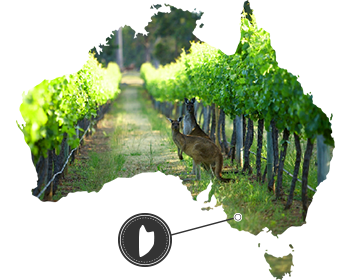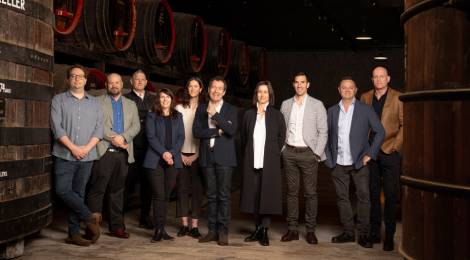Bin 128 Coonawarra Shiraz 2023 (Cork)
Penfolds
Bin 128 Coonawarra Shiraz 2023 (Cork)
Overview
Overview
Bin 128 is a pure expression of Coonawarra Shiraz, crafted from fruit grown on the region’s famed terra rossa soils. Offering a cooler-climate counterpoint to the more opulent Bin 28, Bin 128 captures the elegance, perfume and refined structure of Coonawarra reds. Since its inaugural 1962 release, this wine has remained rooted in the region, with maturation now taking place in French oak hogsheads, both new and seasoned, highlighting its distinctive style.
The 2023 vintage is graceful and finely structured, revealing a cool-climate profile and unmistakable Penfolds character.
| Varietal | Shiraz |
|---|---|
| Vintage | 2023 |
| Country | Australia |
| Region | Coonawarra |
| Volume | 750 mL |
| Closure | Cork |
| Alc/Vol | 14.5% |
| Peak Drinking | Now - 2043 |
| Winemaker | The Penfolds Team |
Awards and Accolades
Awards and Accolades
| 95 Points | Nick Ryan |
| 95 Points | Ray Jordan |
Nick Ryan
"Some bemoan price rises on these wines, but each year a classic ‘Bin’ wine stands out as the value choice. The 2023 vintage dictates that this year’s comes from Coonawarra. Focused, silky and svelte. Pepper (white and pink), ripe plums, dark chocolate. Soot and smoke; ironstone too. A firm, forged finish. 95 Points."
Ray Jordan
"It shows a distinctive chalky limestone-like regionality evident on the nose and the palate. Bright red fruits with nuances of strawberry and spicy red berry. The middle palate is concentrated and rich, while the finish gathers to deliver long. Like the combination of savoury sweetness that adds that subtle complexity. A wine with good cellaring potential, as you might expect. 95 Points."
Taste Description
Taste Description
Nose
The scent of pink peppercorns and a burst of sharp red cranberry are followed by goji berries and conserved wild strawberries. Next, charcuterie meats, black olives, and salted rosemary bread emerge. Dense dark fruits are complimented by a blend of aromatic high notes. As the wine opens, it reveals savoury notes of rare roast beef and caperberries. An undercurrent of fresh fennel and baking spice is present, while roasted red peppers weave through, adding complexity and warmth to the aromatic profile.
Flavours and Palate
Chalky, fine tannins showcase the wine’s elegance and restraint. A dusty earthiness is the backbone to the pepper and Mediterranean vegetable flavours. The saline hint of olives and corned beef introduces a savoury counterpoint, balanced by the sweet anise of shaved fennel. Coonawarra’s ancient geological origins shine, with terra rossa mineral elements grounding the palate, while Italian sausage meat adds complexity. The fruit spectrum ranges from tart cranberry to sour rhubarb, finishing with bright, acidic fresh cherry. This wine promises to unfurl gracefully over the coming decades.
Viticulture Vintage & Winemaking
Viticulture Vintage & Winemaking

Coonawarra, South Australia
Coonawarra, on South Australia’s Limestone Coast, is a flat, isolated region almost mid-point between Adelaide and Melbourne. The area enjoys a cool maritime climate - similar to that of Bordeaux - and is renowned for its unique terra rossa soil. Rich, rust coloured soils… crimson sunburnt faces… magenta sunsets: this is red wine country! While Coonawarra is famous for its rich, minty Cabernet, the area also produces Shiraz and Merlot and surprisingly good Chardonnay and Riesling.
Vintage Conditions
In Coonawarra, above-average rainfall was recorded for the months of May, June, and August, while July was considered dry, with below-average falls. In September, a La Niña event occurred (the third in a row), bringing an increased likelihood of high rainfall in spring. A cold front passed over Coonawarra in late October with abundant rainfall recorded. November was also significantly wetter than average. October – April rainfall was 50% above average, a welcome outcome for the region’s natural underground aquifer but a result that required diligence in the vineyards. Temperatures remained cool through spring with the wet conditions warding off any threat of frost. Some vineyards suffered crop losses due to the wet and windy spring conditions. Flowering began for Shiraz vines in early December. Summer saw a return to normal weather patterns and was generally warm, with 10 days of temperatures exceeding 35°C, including a maximum of 39.6°C. December and January rainfall was below average. February was wetter-than-average, driven by two main events – a cold front in early February and another frontal system that moved into the region at the end of the month. Low intensity heatwave conditions occurred in mid-late February.

The Penfolds Team
Key to the success of Penfolds has been a lineage of visionary winemakers. There have only ever been four Chief Winemakers at the helm of Penfolds – Max Schubert, Don Ditter, John Duval and Peter Gago, each a custodian of a rich winemaking tradition that goes back for more than 170 years.
Our current Penfolds winemaking team has more than 100 years between them as Penfolds winemakers. They are constantly refining and improving their work, whilst honouring the winemaking techniques of their predecessors.


